On a recent trip to England, we decided to stay for a few days in Harrogate and see more of a part of the country that we hadn’t really visited before. What is amazing about the UK is the almost endless list of interesting places to visit, and this area of Yorkshire was no different. In fact, we came away deciding that we would have to stay for longer (perhaps in the National Trust cottages in the grounds of this abbey) on our next visit!
Anyway, one of the first trips out was to Fountains Abbey, one of the most beautiful and historic places in England. Fountains Abbey is a huge complex of ruins that used to be a Cistercian monastery in the 12th century. It’s now a UNESCO World Heritage Site and a stunning example of medieval architecture and culture. We had a blast exploring the grounds, learning about the history and taking lots of photos!
I was ready with my camera on the walk down from the visitor’s center to the Abbey – I thought that building the wall and leaving space for the tree to grow was an unusual way to create a barrier although I am not sure who or what would be kept out here!
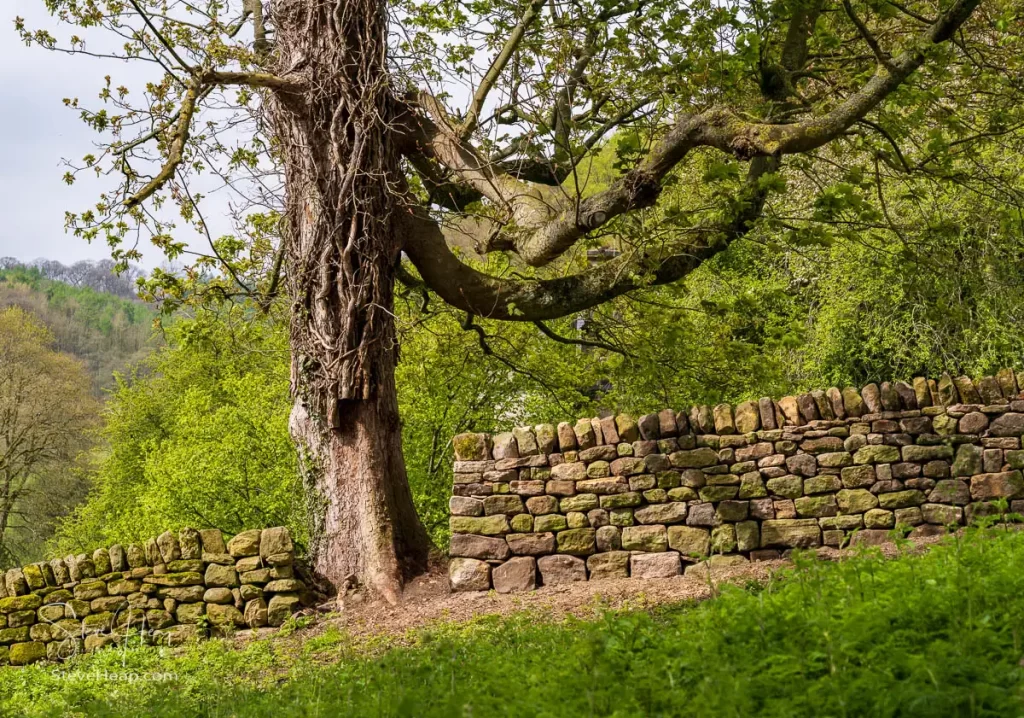
After a dispute and riot in 1132 at the Benedictine house of St Mary’s Abbey in York, 13 monks were expelled, among them Saint Robert of Newminster. They were taken under the protection of Thurstan, Archbishop of York, who provided them with land in the valley of the River Skell, a tributary of the Ure. The enclosed valley had all the natural features needed for the creation of a monastery, providing shelter from the weather, stone and timber for building, and a supply of running water. The six springs that watered the site inspired the monks to give it the name of Fountains. The abbey was once one of the largest and wealthiest monasteries in Europe, but it was dissolved by Henry VIII in 1539 as part of the Reformation. I’m always amazed how these massive stone buildings could have been constructed with only man (and horse) power, and the fact that they are still standing today after almost 500 years of neglect is a testament to their skill.
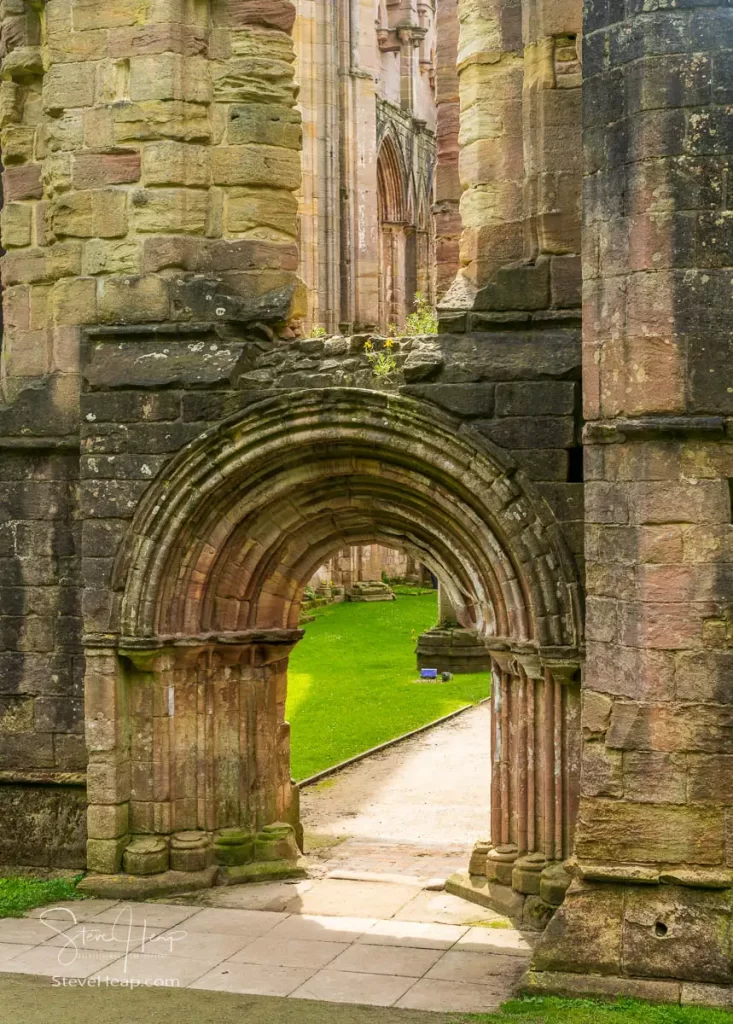
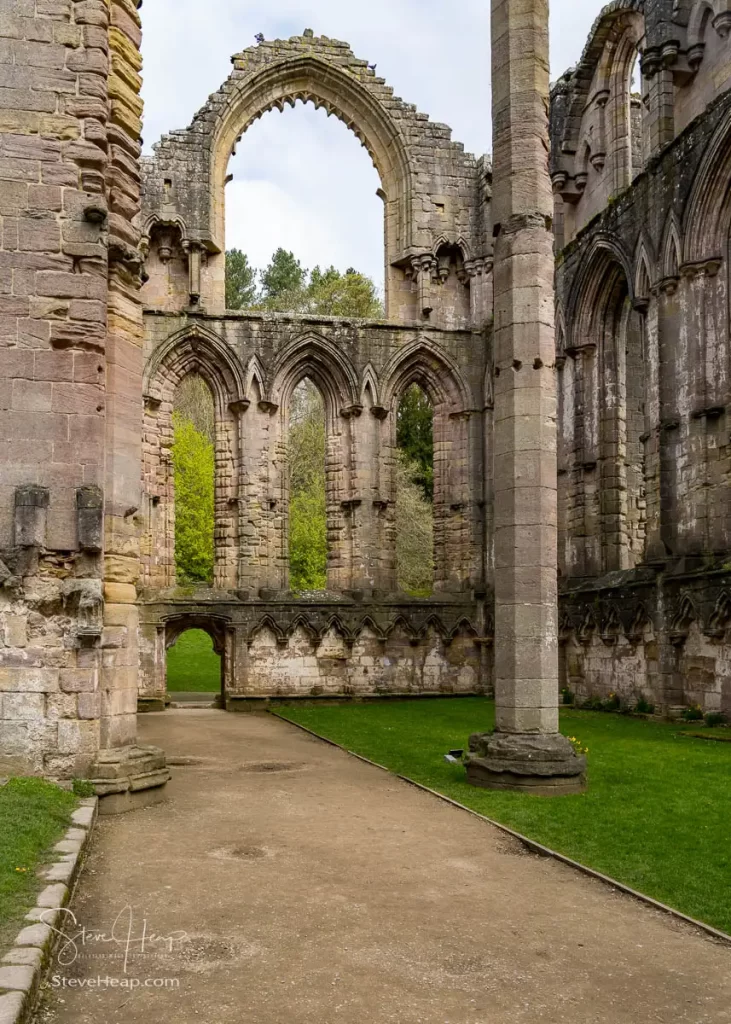
Marmaduke Huby (1495–1526) expanded the number of monks from twenty-two to fifty-two, and undertook a building program which included a new tower at the north end of the transept and extending the infirmary. Known to visitors as Huby’s Tower, it was decorated with the abbot’s insignia.
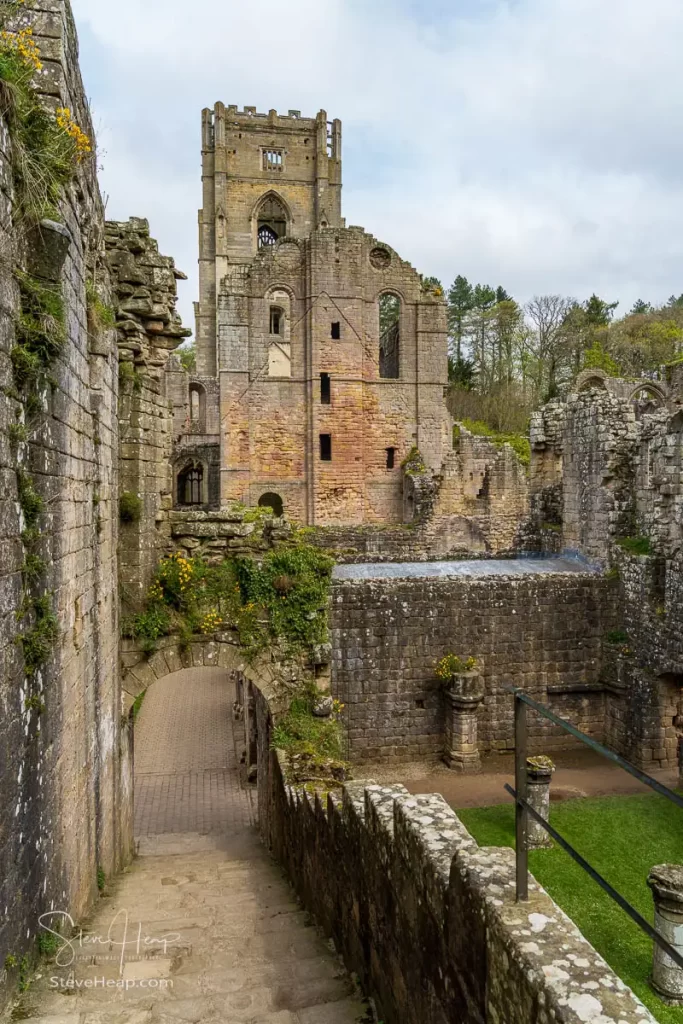
It was fascinating to see the scale of the cellars under what was the “Great Cloister”. Two long rows of stone arches in this Cellarium stretch over 300 feet and support the solid stone floor above where the monks used to walk.
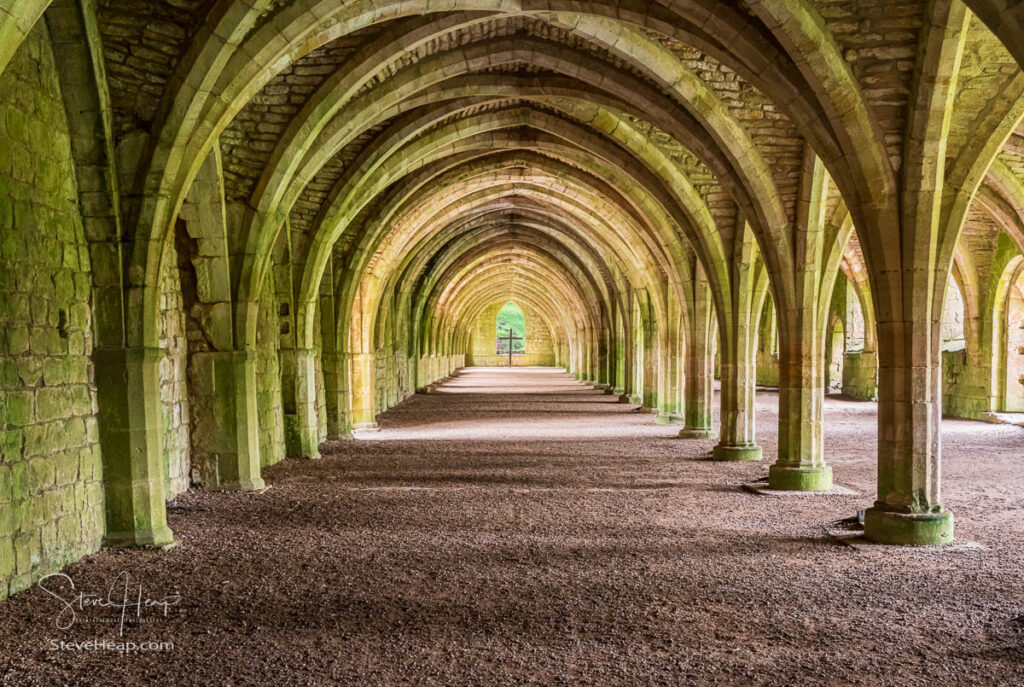
Following the Dissolution of the Monasteries in 1539 by Henry VIII, the Abbey buildings and over 500 acres of land were sold to Sir Richard Gresham, a merchant. The property was passed down through several generations of Sir Richard’s family, finally being sold to Sir Stephen Proctor who built Fountains Hall in 1611. This Elizabethan mansion was built partly with stone from the Abbey ruins and now houses two National Trust rental apartments.
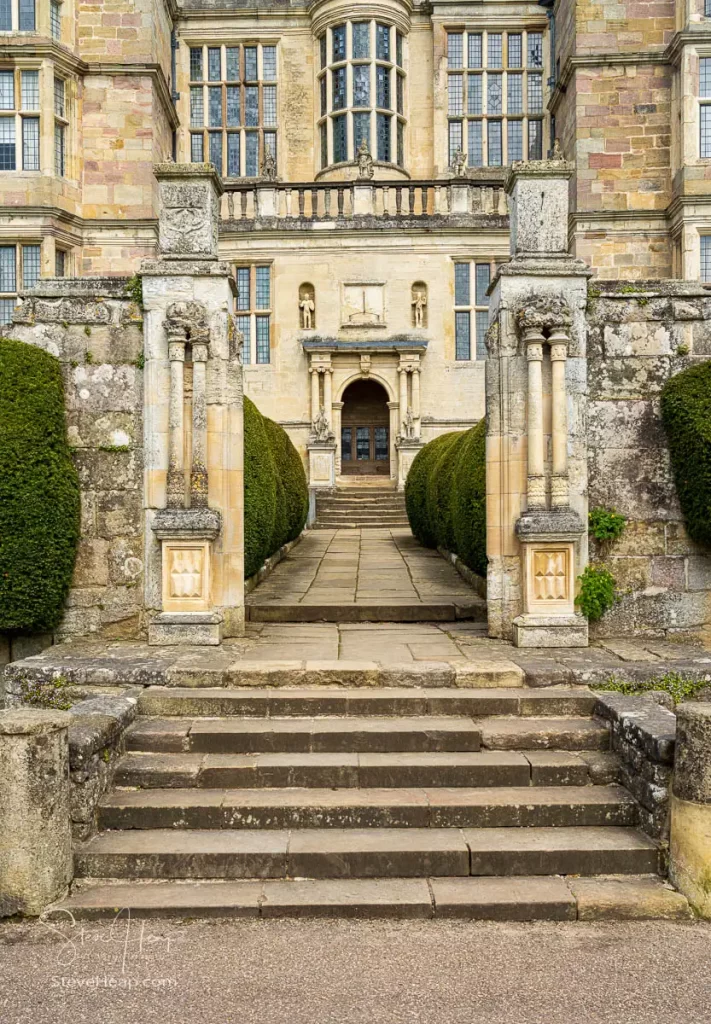
The hall itself has some interesting (and somewhat ghoulish) statues. This one is of Saturn, the Greek god, eating his own baby after hearing a prophesy that one of his sons would kill him. As a result, he ate all the male babies, although his wife managed to hide one away. Zeus, did kill him and became the new god.
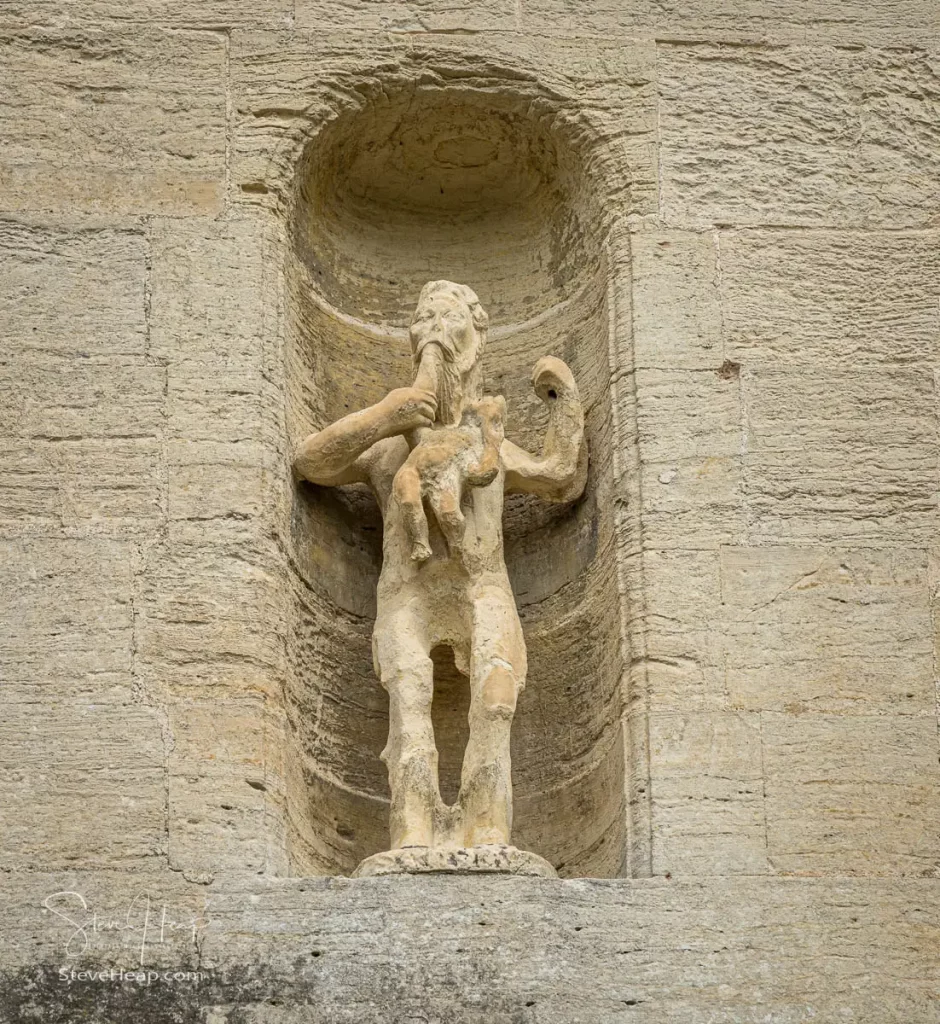
I’m always impressed by topiary – this could almost be a modern sculpture!
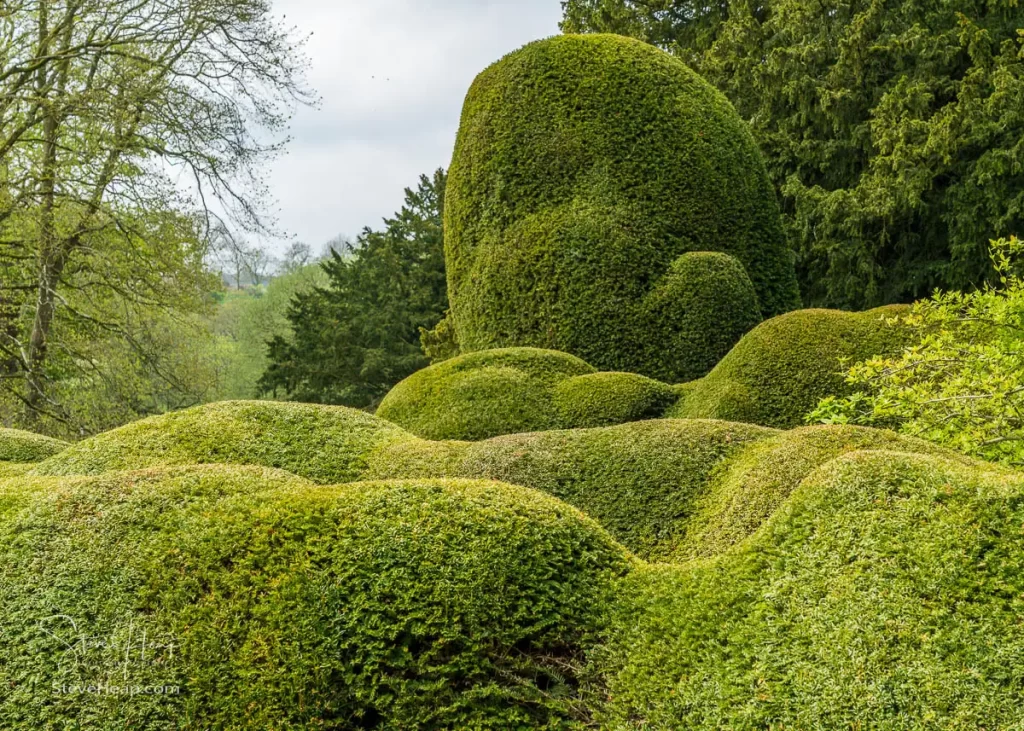
We then explored the rest of the estate, which covers over 800 acres of parkland, gardens and woodland. This estate was designed by John Aislabie in the 18th century, who wanted to create a harmonious landscape that blended nature and art. He succeeded in creating one of the finest examples of Georgian water gardens in England, and it perfectly frames the ruins of the Abbey itself.
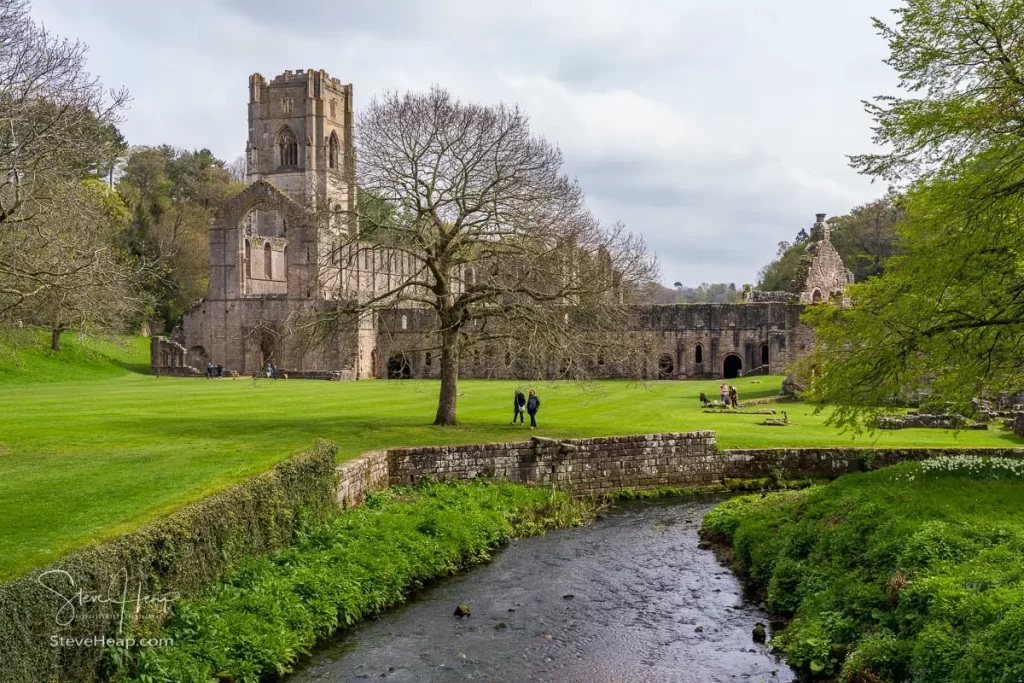
I thought the composition of this view of the Abbey was almost perfect – but perhaps even more so in Black and White?
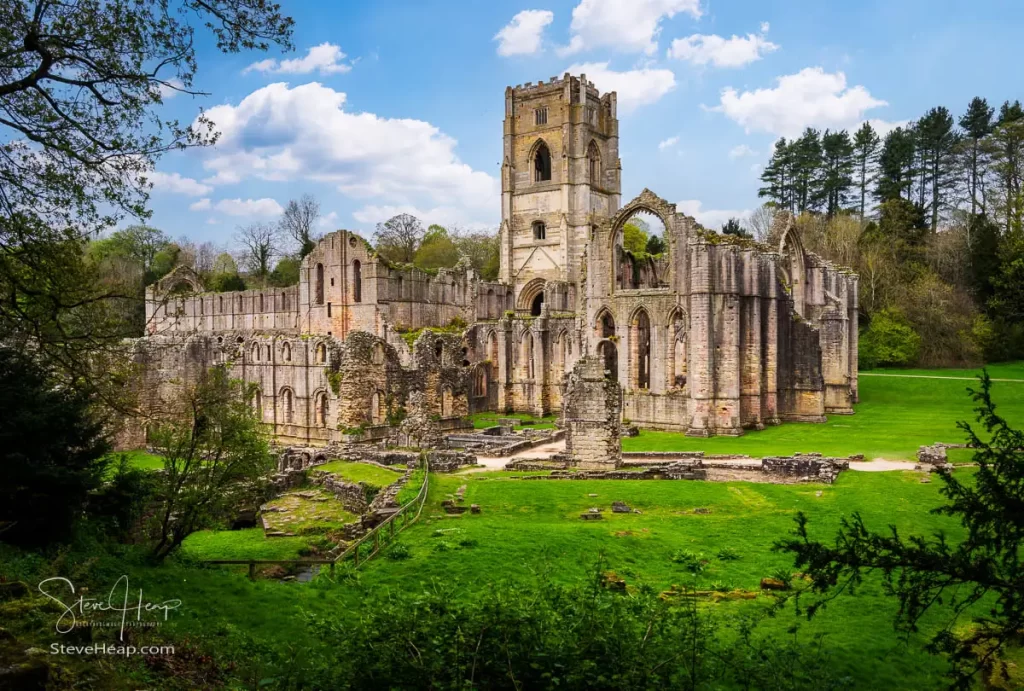
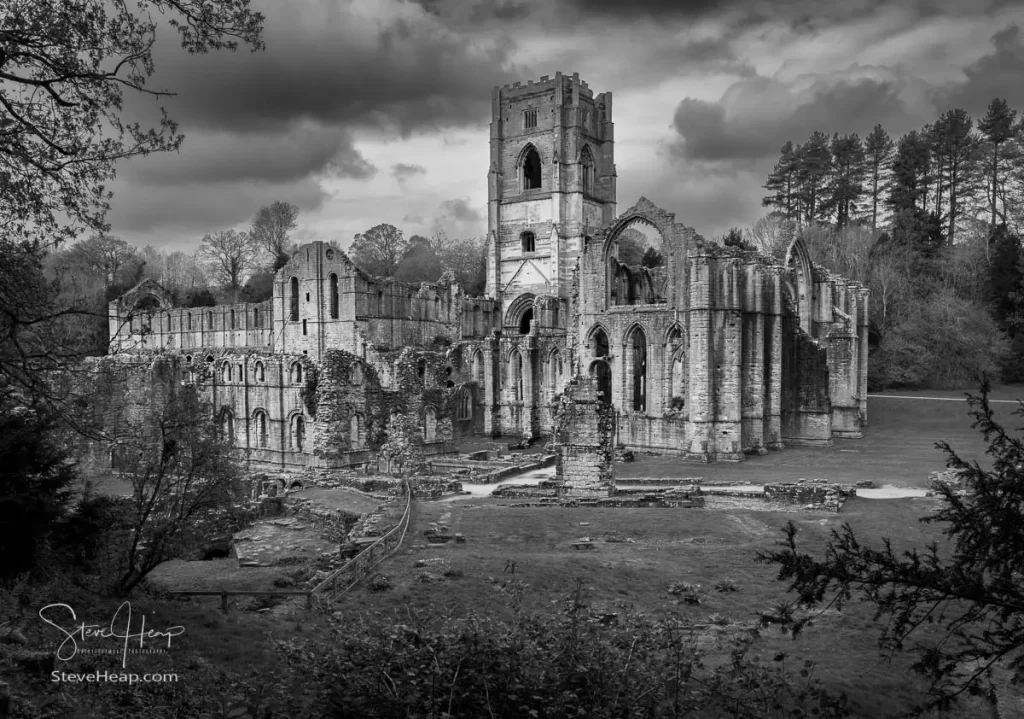
Strolling down along the river gave us many other opportunities to see the ruins within the valley – both in portrait format and landscape:
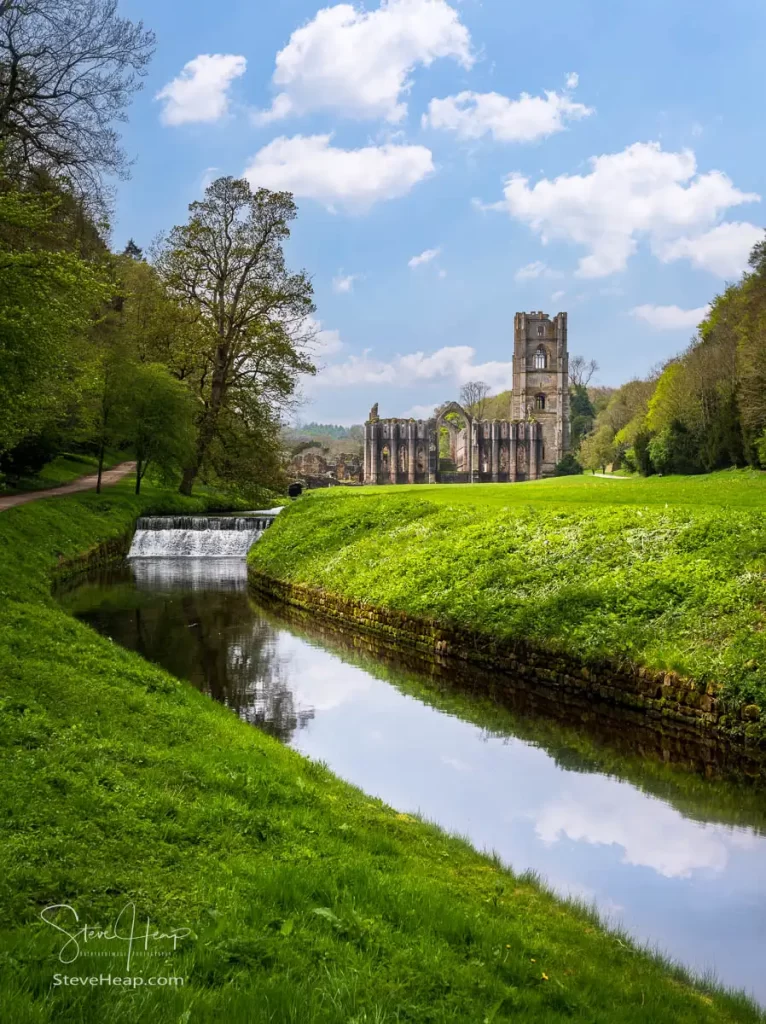
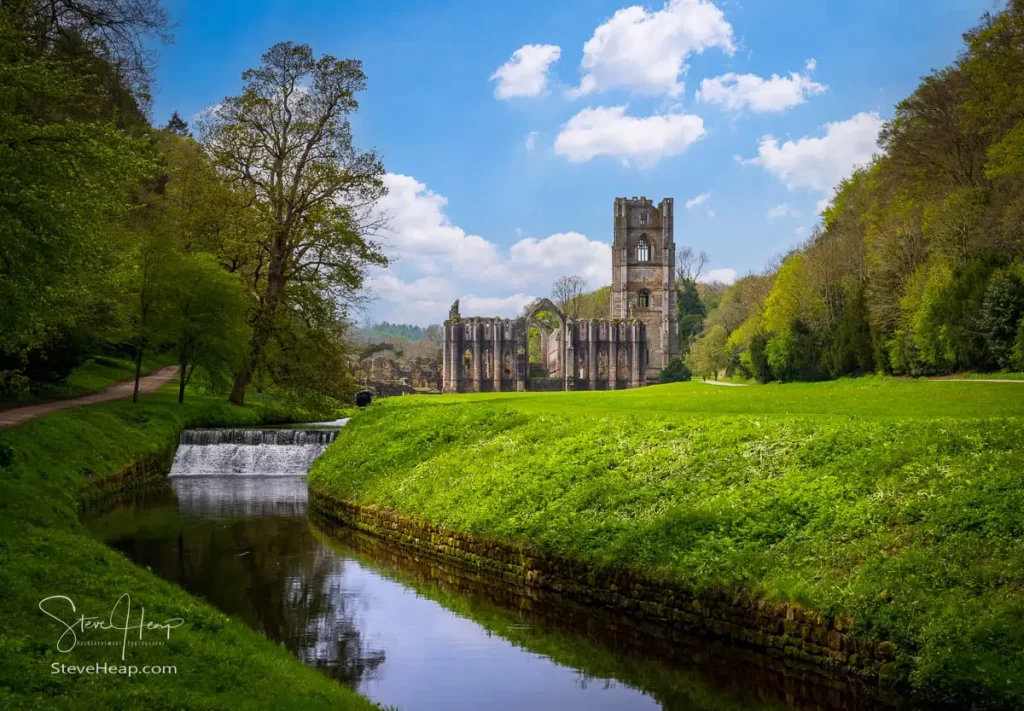
Finally, although we were flagging a little, I took the detour to the top of the hill to see the “secret view” through the trees and along the valley to the ruins:
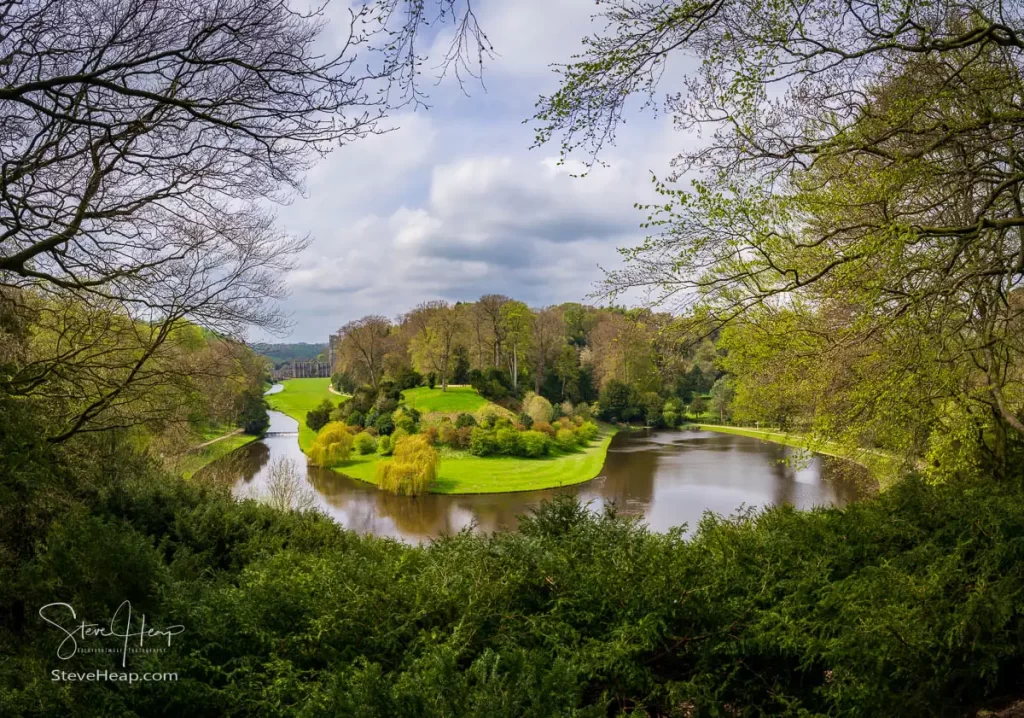
A fitting end to the day!
If you are interested in prints of my work, I have three suppliers to meet your needs. For Free Shipping in the USA and Canada, I suggest you use Pictorem. For a wider range of products and printing in various European countries, try Pixels and for UK prints, I use Photo4Me. All of them are high quality suppliers of prints.
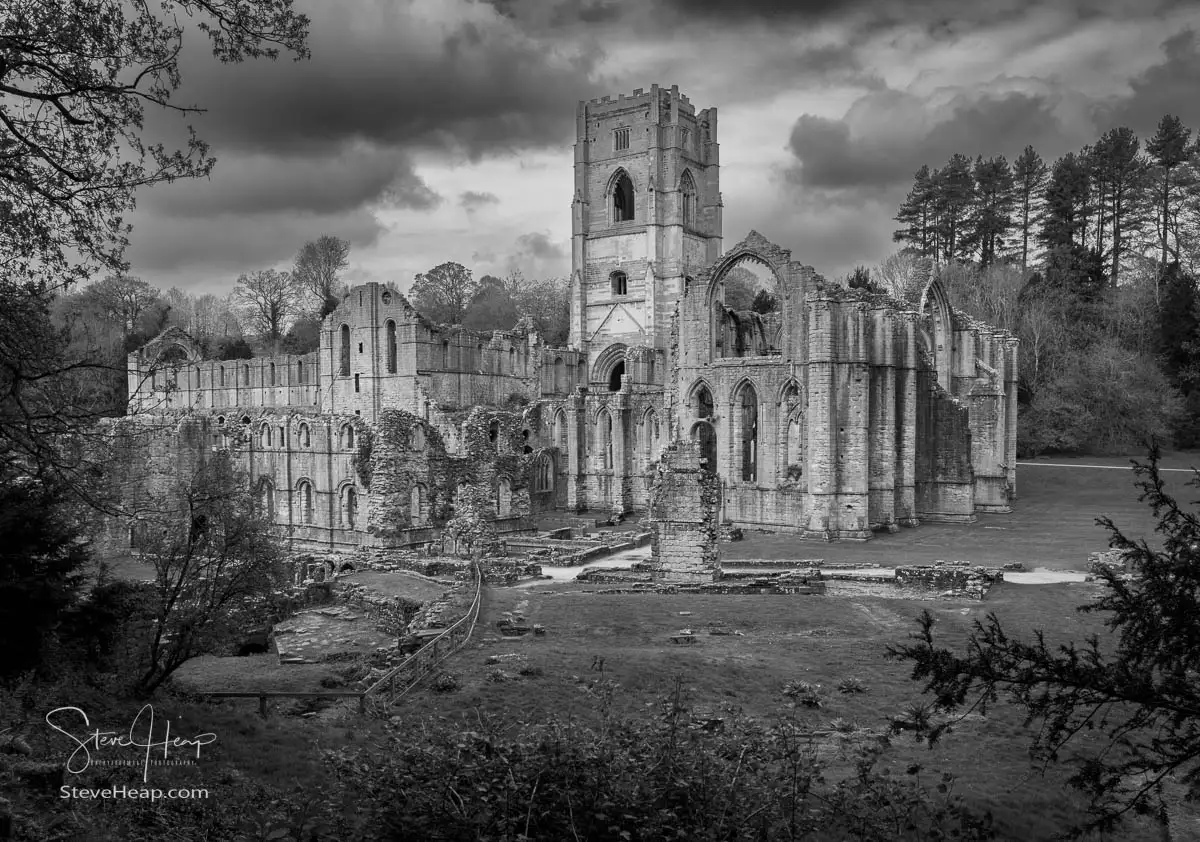

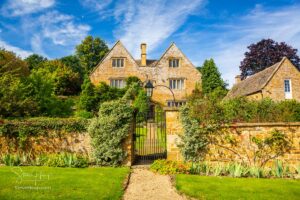
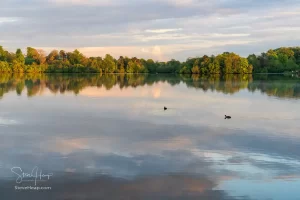
Louis Dallara
22 May 2023I loved the Great Cloister photograph.